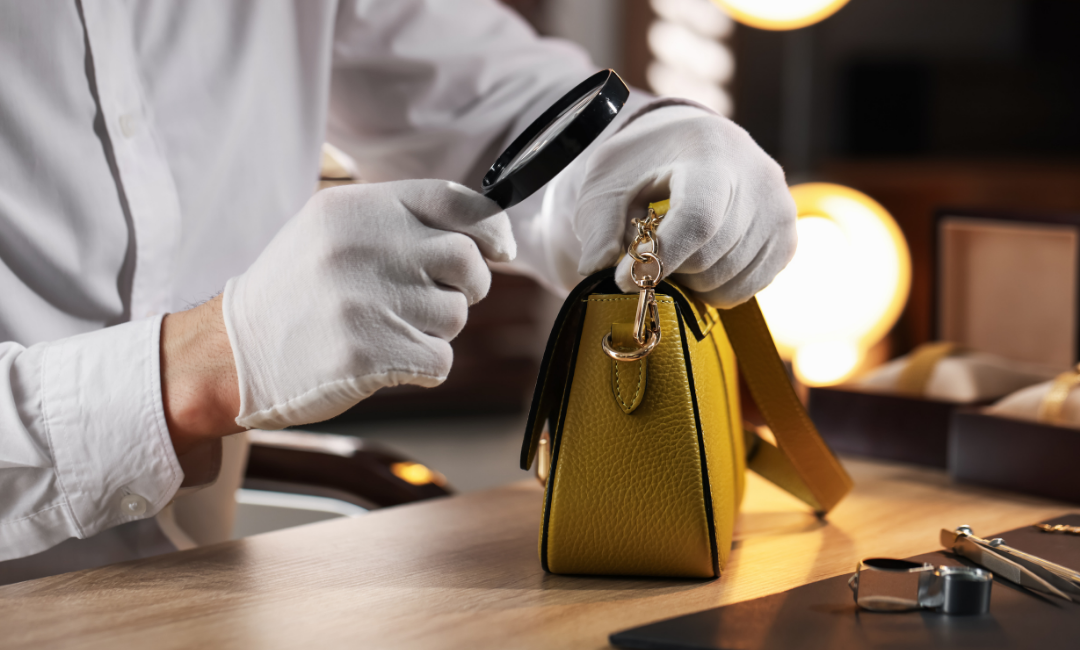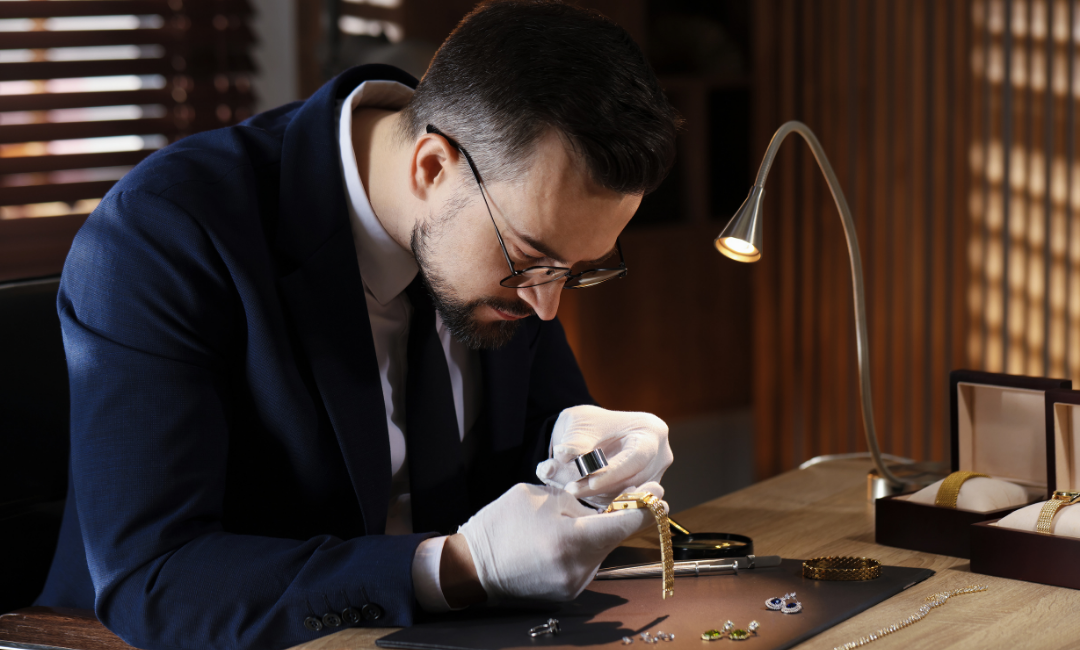Need cash today? You’re sitting on thousands of dollars worth of valuables right now — that Rolex collecting dust, designer bags in your closet, gold jewelry you never wear. Yet most people have no idea how to turn these items into instant money without selling them permanently.
Pawn shops move over $14.5 billion annually in the U.S., but here’s what’s wild: 85% of customers get their items back. This guide breaks down exactly how the process works, what determines your payout, and the insider moves that get you maximum cash.
Here’s what we’ll cover:
- The step-by-step pawn shop process
- Pawning vs. selling (and which pays more)
- How shops determine your item’s value
- Interest rates and loan terms explained
- What items get the highest payouts
- Pros, cons, and whether it’s worth it
At Gold & Bags in Fort Lauderdale, we see this daily — customers walking in stressed about bills and walking out with cash in hand. We’ve streamlined the whole process to take under 30 minutes. Plus, our rates beat typical pawn shops because we specialize in luxury items.
The Step-by-Step Pawn Shop Process
Walking into a pawn shop doesn’t have to feel like stepping into the unknown. Here’s exactly what happens from door to dollars.
- Step 1: Bring your item and ID. You’ll need a government-issued ID (driver’s license works). Some states require fingerprints — takes 30 seconds.
- Step 2: Get your free evaluation. The pawnbroker examines your item. They’re checking authenticity, condition, and market value. For luxury goods at Gold & Bags, we use Entrupy authentication technology that verifies designer pieces in minutes.
- Step 3: Receive your offer. You’ll get two options: a loan amount (pawn) or a purchase price (sell). Loans typically offer 25-60% of the resale value. Selling gets you more cash, but you lose the item.
- Step 4: Accept and get paid. Cash in hand immediately. For loans, you’ll sign a pawn ticket showing your loan amount, interest rate, and due date. Keep this ticket — it’s your golden ticket to getting your item back.
- Step 5: Repay or extend. Most shops give you 30-90 days. Can’t pay in full? You can extend by paying just the interest. Miss the deadline? The shop keeps your item.
That’s it. Fifteen minutes, start to finish.
Pawning vs. Selling (And Which Pays More)
Here’s the million-dollar question: should you pawn or sell? The answer depends on whether you need your item back.
- Pawning means getting a secured loan using your valuable item as collateral. You’ll receive considerably less money — typically 25-60% of the item’s resale value. But here’s the kicker: you can repay the loan plus interest and get your item back. Think of it as renting out your Rolex for cash.
- Selling puts more money in your pocket immediately. You’ll get 50-80% of the market value because the pawn shop doesn’t need to hold your item for months. The downside? Your item’s gone forever.
Let’s say you have a $5,000 watch. A pawn loan might net you $1,500, while selling could bring $2,500-3,000. At Gold & Bags, we’ve seen customers pawn the same luxury handbag three times over two years during tight spots — try doing that if you sell.
Pro tip: Pawn if you’re confident you can repay within 30-90 days. Sell if you haven’t touched that item in over a year. Your dusty designer bag isn’t earning interest in your closet.
How Shops Determine Your Item’s Value

Pawn shops don’t just guess what your stuff’s worth. There’s a science behind every offer.
- Condition matters most. A pristine Cartier watch fetches 70% more than one with scratches. Pawnbrokers check for damage, missing parts, and signs of wear. They’re looking at your item like a future buyer would.
- Market demand drives prices. Gaming consoles fly off shelves in December but sit in July. Gold prices fluctuate daily — we check spot prices every morning. Designer handbags from Hermès or Chanel? Those hold value like real estate.
- Authentication is everything. For luxury items, shops verify authenticity before making offers. Fake merchandise means zero dollars. Gold & Bags uses Entrupy technology that catches 99.1% of counterfeits — protecting both sides of the transaction.
Quick valuation factors:
- Brand recognition (Rolex beats Invicta every time)
- Current retail price
- Local demand (surfboards in Florida vs. Montana)
- How fast it’ll sell
- Storage costs for bulky items
The National Pawnbrokers Association reports that shops aim to profit 38-50% on resale. That’s why your $1,000 laptop might fetch $300-400 on a pawn loan. They need a margin for storage, risk, and the chance you won’t repay.
Interest Rates and Loan Terms Explained
Pawn shop interest rates range from 5% to 25% monthly. Yes, that’s higher than personal loans or credit unions, but here’s what you’re really paying for: no credit checks, instant cash, and zero impact on your credit score.
Typical loan terms:
- Loan period: 30-90 days (varies by state law)
- Monthly interest: 10-20% on average
- Storage fees: $5-20 per month (some shops bundle this)
- Extension options: Pay interest only to extend 30 days
Here’s an example. You pawn a gold necklace for a $500 cash loan at 15% monthly interest. After 30 days, you’ll repay $575 to get it back. Can’t pay the full amount? Drop $75 to extend another month.
State laws matter. Florida caps rates at 25% monthly. New York? Just 4%. The Equal Credit Opportunity Act ensures you won’t face discrimination, but rates stay consistent within each state.
Unlike payday loans or title loans that can trap you in debt cycles, pawn loans have a built-in exit: don’t repay, lose the item, debt cleared. No collections. No damaged credit. The Federal Trade Commission confirms pawn transactions don’t affect your credit score even if you default.
What Items Get the Highest Payouts
Not all valuables are the same in the pawn world. Some items are liquid gold, others barely worth the gas money.
Top dollar items:
- Luxury watches: Rolex, Patek Philippe, Audemars Piguet (50-70% of resale value)
- Gold jewelry: Based on weight and purity — prices update daily
- Designer handbags: Hermès, Chanel, Louis Vuitton hold 60-80% value
- Diamonds: 1+ carat stones with GIA certificates
- Musical instruments: High-end guitars, professional saxophones
- Firearms: Where legal, they’re extremely liquid
Decent money makers:
- Latest gaming consoles and games
- Power tools (DeWalt, Milwaukee, Snap-On)
- Apple products under 2 years old
- Sporting goods (golf clubs, bikes)
- Quality cameras and lenses
Don’t bother bringing:
- Old TVs or electronics
- Furniture (unless it’s designer)
- Clothes (except luxury furs)
- DVDs, CDs, books
Gold & Bags specializes in luxury items because they hold value better. A Chanel Classic Flap bag from 2010? Still worth thousands. That 2010 laptop? Maybe $50.
Insider tip: Clean your items before bringing them in. We’ve seen dirty jewelry get 20% lower offers than identical clean pieces. First impressions count, even for pawnbrokers.
Pros, Cons, and Whether It’s Worth It

Let’s get brutally honest about whether pawn shops make sense for your situation.
The Pros:
- Immediate cash — walk out with money in 15 minutes
- No credit checks or employment verification
- Your credit score stays untouched
- Keep ownership possibility (with pawn loans)
- Regulated by federal laws and state law
- No debt collectors if you default
The Cons:
- High interest rates compared to banks
- You get considerably less money than private sales
- Risk losing sentimental items
- Additional fees can stack up
- Short-term loans mean quick repayment pressure
When It’s Worth It:
Pawn shops work best for short-term cash crunches when you know money’s coming. Got a $2,000 tax refund arriving in three weeks, but rent’s due tomorrow? That’s pawn shop territory.
They’re also perfect when traditional lending isn’t an option. Bad credit? No problem. Need money today, not next week? Done. The average pawn shop loan of $150 helps millions access funds without predatory alternatives.
When to Look Elsewhere:
Skip pawn shops for long-term borrowing. Those interest payments add up fast — a six-month pawn loan could cost you 100%+ in interest. Personal finance experts suggest credit unions or personal loans for anything over 90 days.
Bottom line: Pawn shops offer a valuable service when used correctly. At Gold & Bags, about 85% of our customers reclaim their items. They’re using pawn loans as designed — a bridge, not a destination.
Need Fast Cash? Gold & Bags Makes Pawning Simple
Pawn shops aren’t mysterious vaults where your valuables disappear. They’re regulated businesses offering loans when you need money quickly. Now you know the process, the math, and what gets top dollar.
Key takeaways:
- Pawn shops require only ID and valuable items — no credit checks
- You’ll get 25-60% of value for loans, 50-80% for sales
- Interest runs 5-25% monthly, depending on the state
- Luxury items and gold offer the best returns
- 85% of pawned items get reclaimed by owners
Whether you need fast cash for emergencies or want to sell the item outright, Gold & Bags streamlines everything. We specialize in luxury goods, use certified authentication, and offer higher prices than typical pawnshops. Our Fort Lauderdale location handles your pawn transaction in under 30 minutes — because when you need quick cash, waiting isn’t an option.
FAQs
How much will a pawn shop give you for a $1000 item?
Expect $250-$600 for a pawn loan, or $500-$800 if you sell. The exact amount depends on other factors like demand, condition, and brand. Luxury items fetch higher percentages — a $1000 Rolex might get you $600, while a $1000 TV barely breaks $200. Pawn shop loans require collateral, but that valuable item determines everything. Gold & Bags typically beats standard offers by 20-30% on designer goods.
What is the dark side of pawn shops?
The biggest risks are high interest rates and losing sentimental items. Some sketchy shops deal in stolen merchandise — that’s why legitimate shops report to local law enforcement daily under the Patriot Act. They photograph items and check databases for stolen property.
Receiving stolen merchandise means serious federal charges, so reputable shops like Gold & Bags verify ownership carefully. The real dark side? Getting trapped in renewal cycles, paying interest monthly without touching the principal.
How do pawn shop payments work?
Your loan agreement specifies everything: due date, interest, and total repayment. Most states give you 30-90 days to repay. You can pay the full amount plus interest to reclaim your pawned item, or pay just interest to extend 30 days. Miss the deadline? The shop keeps your personal property — no collections, no credit damage. Some shops offer grace periods or payment plans, but that varies.
Is it better to pawn or sell?
Pawn if you’ll have money within 90 days and want your item back. Sell if you haven’t used it in over a year or need maximum cash now. Pawning gives you alternatives to pawn later if needed — you can always return and sell. Consider this: pawning a small loan against your grandmother’s ring keeps it in the family while covering emergencies. Selling means it’s gone forever, but you’ll get that higher price upfront.


































